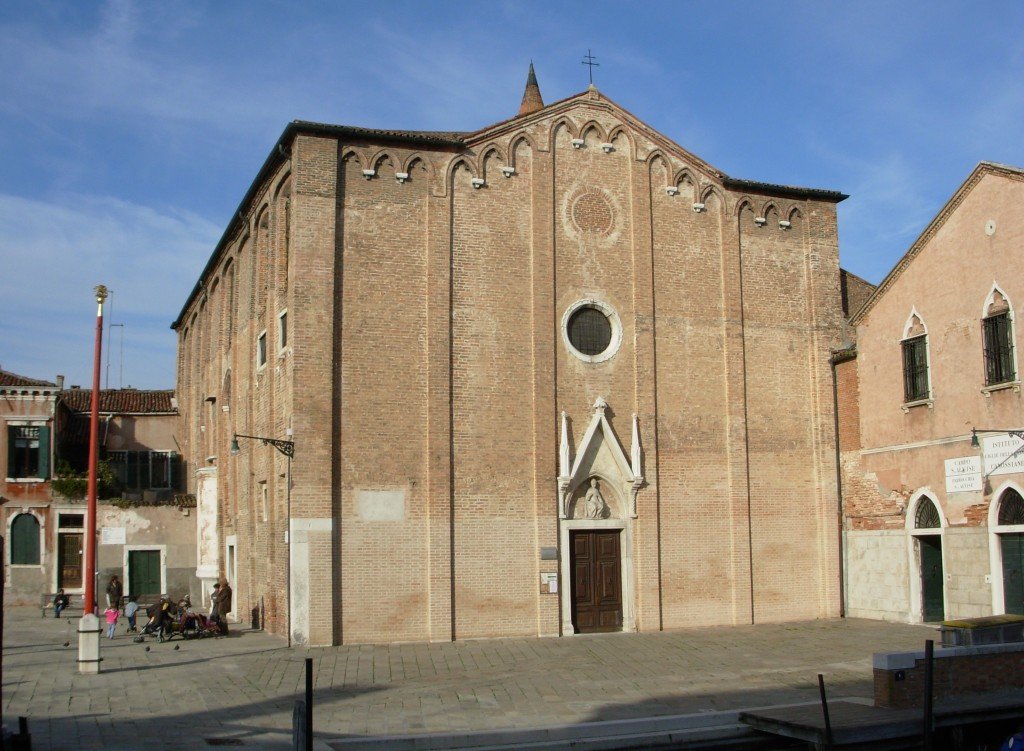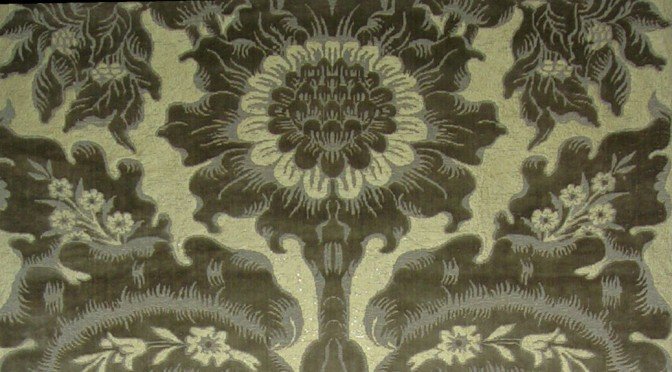What really stands out, when taking a first look at the soprarizzo velvet 3416, is the huge sunflower rising high above the leaves and tulips placed in the same vase. But there are other elements characterising this furnishing velvet: let’s see which they are, starting with one of the places where you can find it, the church of Sant’Alvise in Venice.
The church of Sant’Alvise
Some places in Venice are hard to spot, but this doesn’t mean they are less charming: this is true of Sant’Alvise, too. Which, in fact, is dedicated to Saint Louis of Toulouse. In Venice he’s better known as Alvise, though.

The church of Sant’Alvise
The church is just two minutes away from the waterbus stop bearing the same name, but this is a rather little known area of the sestiere of Cannaregio. Antonia Venier decided to build it in 1383, after the Saint had appeared to her in a dream.
Thanks to this backer, a church with a single nave was constructed in five years, then modified in the 17th century, where today one can see three masterpieces by Giambattista Tiepolo: Christ Reaching the Calvary, the Coronation of Thorns, and the Flagellation. And, during the most important celebrations, Bevilacqua’s Italian soprarizzo velvet.
Flowers on furnishing velvets: an interpretation

The Sant’Alvise velvet
The vase embroidered on the gilded yellow ground of this fabric, resembling 18th-century French furnishing velvets, is surrounded by peonies and hazel twigs. But why does the pattern show these flowers, rather than others?
This has doubtless something to do with their elegance, but each flowers conceals a symbol. Sunflowers stand for devotion: it’s exactly this flower that the nymph Clytie turns into, one of Helios’s lovers. Out of jealousy, the nymph causes the death of Leucothea. Helios, though, is disgusted by Clytie’s behaviour and abandons her: Clytie will henceforth spend their days following the Sun’s chart with her eyes, and ultimately turn into a sunflower.
Peonies, on the other hand, are often used as a symbol of the Virgin: as beautiful as roses, indeed, they have no thorns. Finally, tulips, which wither when left far from light, hint at God’s love and mercy.


